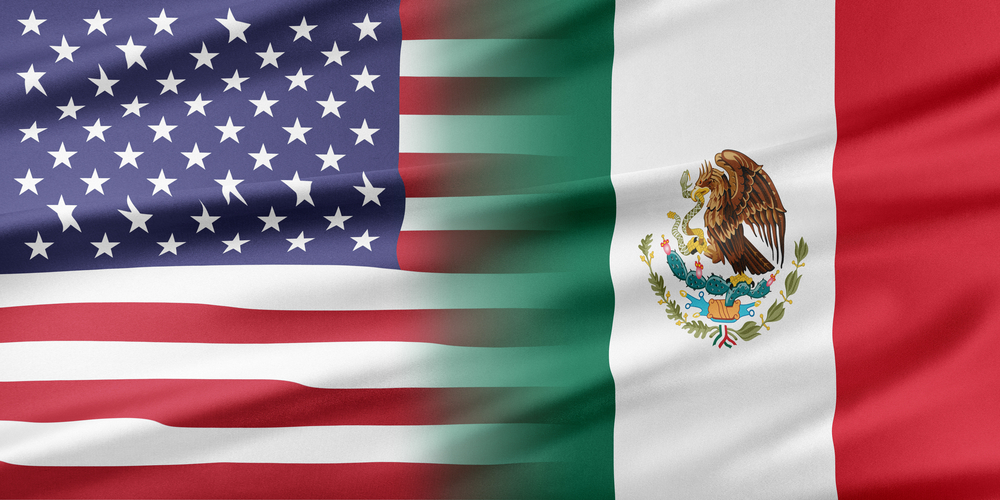With the U.S. and China locked in a trade war, companies are rethinking their manufacturing strategies and considering new options – and countries like Mexico are poised to benefit.
The quick facts about the U.S.-China Trade War
Despite ongoing negations over the past year, trade war tensions flared last as the Trump administration officially raised tariffs on USD $200 Billion in Chinese exports to 25 percent from 10 percent earlier this May. The two countries have struggled to come to an agreement, with the conflict threatening to damage the global economy.
In retaliation, China is set to raise tariffs on USD $60 Billion in U.S. goods starting June 1, according to CNBC. For more than 5,000 U.S. products, tariffs will increase from their current rates of 5-10 percent to as high as 25 percent, and duties on some products will go up to 20 percent.
Though talks continue, the U.S. is now considering a tariff increase to 25% for an additional USD $325 Billion in Chinese goods currently untaxed under the first round of tariff increases.
Tariff pressures are causing companies to reconsider their reliance on China
The current state of trade relations between the United States and China has the globe asking: what happens if high tariffs continue to escalate – will manufacturers be persuaded to leave China? And if they do, will they make the move to the U.S. as the Trump Administration has suggested?
In fact, companies may end up turning to an unexpected benefactor – Mexico.
The Trump administration’s move to raise tariffs has dramatically escalated tensions despite months of negotiating to end the yearlong trade dispute. The impact on the global economy has already become apparent, guaranteeing enormous implications for businesses around the world.
Shaken by the constant uncertainty of China’s trade status with the U.S., companies are increasingly beginning to reconsider their reliance on the country as their primary hub for manufacturing. Looking to ease growing tariff pressure, Mexico stands to benefit tremendously as companies turn to cost-friendly players.
Low-cost alternatives to China: where to turn?
According to Politico, the tariff increase, which is squarely aimed at the taxation of Chinese goods, is designed makes those goods less appealing to both manufacture and purchase for American manufacturers and consumers. In theory, this creates an incentive for those goods to be produced in the U.S. as opposed to China.
Possibly overlooked, however, is the fact that other low-cost producers can offer many benefits, some more attractive than either China or the United States.
Given the volatility of the American tariff policy over time, many companies have already started to reconsider China and become open to possibilities in places like Vietnam, Malaysia, the Philippines, Indonesia, Egypt, and of course – Mexico.
But what makes Mexico so attractive?
For U.S. companies in particular, proximity is paramount. Relocating manufacturing to a country just across the border versus across the globe is undoubtedly more accessible and affordable. Additionally, Mexico is already known for its manufacturing prowess in many different industries, and the infrastructure to trade and transport goods has been long established given the North American Free Trade Agreement (NAFTA). Mexico’s unique value in these areas makes it a country of particular benefit for companies reconsidering their operations in China.
Companies have already started to make the move
In light of the trade situation, some manufacturers have already made the move – mobile camera manufacturer GoPro, sensor and remote control producer Universal Electronics, and toy maker Hasbro have already reduced their dependence on China in response and have shifted some of the work to Mexico.
Paper product manufacturer Fuling Global Inc. is another company looking to Mexico for tariff relief. Based in Wenling, China, the company’s business was booming as a paper cup and straw manufacturer for the U.S. restaurant industry. In an effort to avoid the recently imposed tariffs, which apply to paper products, Fuling Global is opening a new USD $4 million factory in one of Mexico’s manufacturing hubs, Monterrey, Nuevo Leon.
Soon, the company will begin exporting millions of paper straws across the border – tariff free.
In addition to avoiding tariff-related costs, Fuling’s shipping and labor costs will be significantly reduced compared to China, yet another benefit of moving the company’s operations to Mexico.
Considerations for companies impacted by the tariffs
Given the global state of affairs and the country’s capabilities, Mexico may be a viable, attractive option. With competitive cost, labor, and skill options, the country’s competitive advantages are many – and given the current trade outlook, moving or establishing operations from China to Mexico may make sense. If impacted by the tariffs, how do you begin to evaluate Mexico as a low-cost alternative to China?
There are many considerations for choosing to manufacture in the country, but there are also a wealth of resources for companies considering their options. For additional information about how Mexico may help achieve new manufacturing objectives in today’s rapidly changing landscape, contact Tetakawi.
Subscribe
Sign up and stay informed with tips, updates, and best practices for manufacturing in Mexico.





